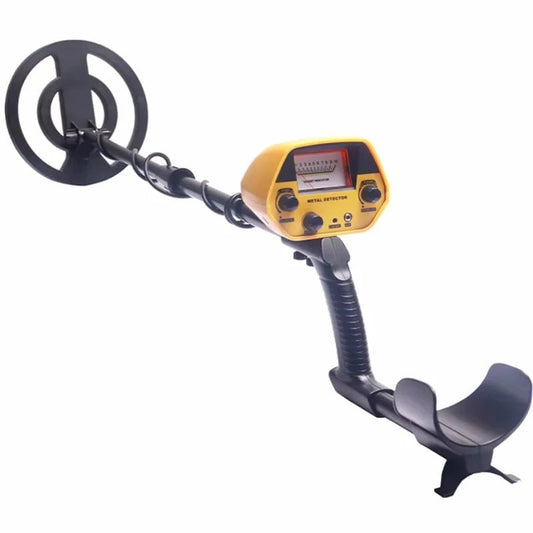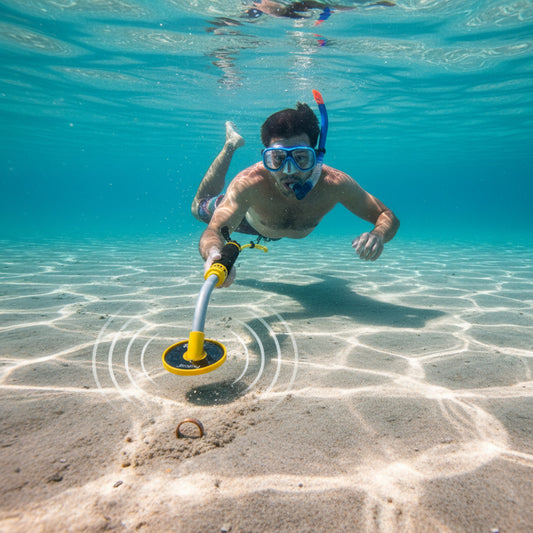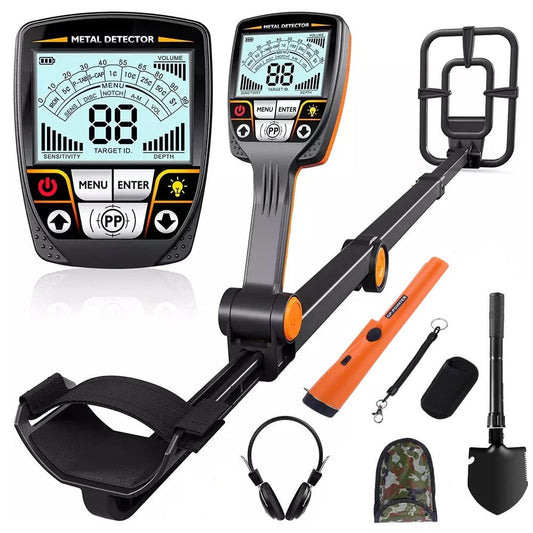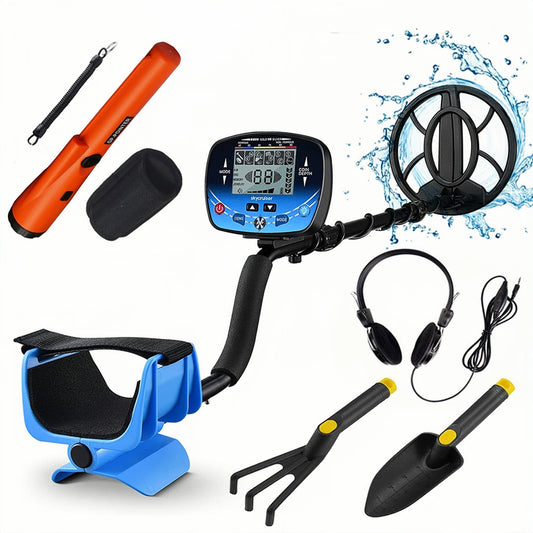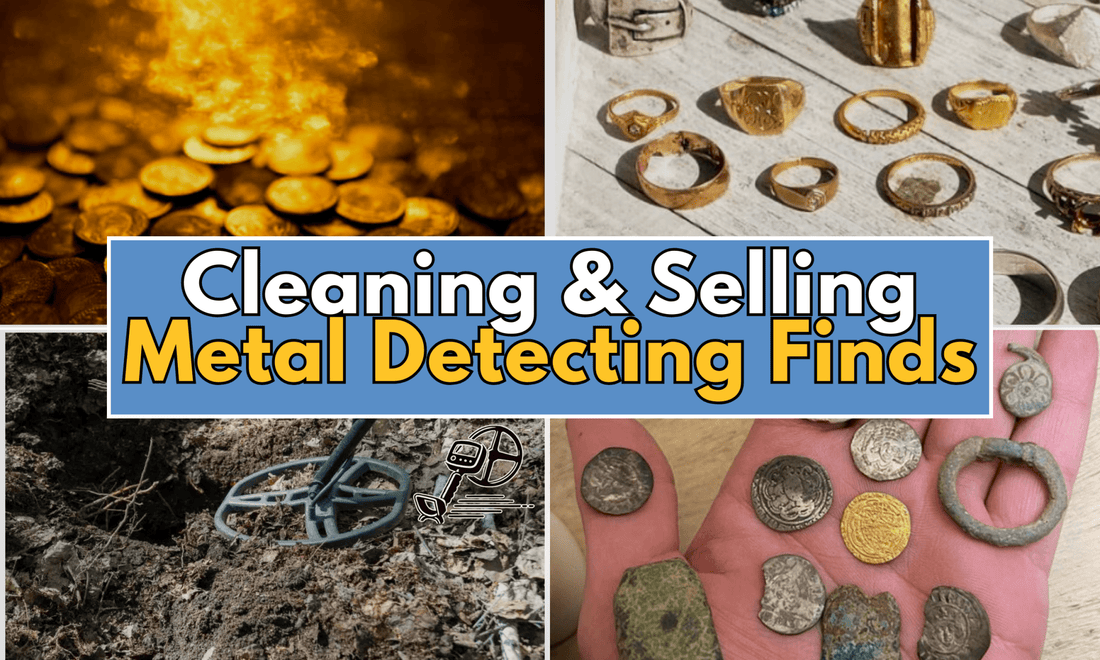
How to Clean and Sell Metal Detector Finds: A Guide for Detectorists
Share
Preparing Metal Detecting Finds: Why Cleaning Matters
The Importance of Cleaning Metal Detector Finds
Proper cleaning can make a significant difference in the presentation, appeal, and value of your metal detecting finds.
Cleaning helps you better identify the details on coins, jewelry, or other artifacts, potentially revealing information about the item's origin or historical significance.
However, it’s essential to proceed with caution, as over-cleaning or using improper techniques can reduce the value of your finds.
Risks of Over-Cleaning Valuable Finds

With certain finds, like rare coins or delicate relics, it’s best to avoid aggressive cleaning techniques that can damage the surface.
For example, coins found with metal detectors are often covered in tarnish or dirt, but aggressive scrubbing can strip away the patina, which collectors often value.
Over-cleaning can lead to scratches, reduce historical integrity, and lower market value. Knowing when and how to clean metal detector finds ensures they retain both their historical value and visual appeal.
When to Leave Finds Untouched
In some cases, leaving finds as they are can be more beneficial than cleaning. For particularly rare or fragile items, or if you’re unsure of the best cleaning approach, consulting a professional is advisable. Items like ancient relics, rare coins, or unique jewelry pieces may require specialized care, so it’s best to leave them in their original condition until you’re sure of the safest cleaning methods.
Cleaning Metal Detector Finds: Techniques for Coins, Relics, and More

Cleaning Coins Found with a Metal Detector
Metal detecting finds, such as coins, often require gentle but effective cleaning to remove soil and grime. Here are some tips for cleaning metal detector coins without causing damage:
- Soaking in Distilled Water: Distilled water is a safe option for loosening dirt. Soak coins overnight to allow dirt to soften, then use a soft brush to gently remove the buildup.
- Baking Soda Paste: For heavily tarnished coins, make a paste using baking soda and water. Rub it gently onto the surface to reduce tarnish but avoid scrubbing to protect the coin’s finish.
- Electrolysis: Electrolysis is a method for advanced users and should be used cautiously. This technique involves using an electric current to remove corrosion, and it works well for certain metals but can damage softer coins.
Cleaning Iron Metal Detecting Finds and Rusty Artifacts

Cleaning iron metal detecting finds can be challenging due to rust and corrosion. Here are some effective methods for restoring iron finds:
- Rust Removal with Vinegar: Soak rusty iron artifacts in vinegar for several hours, then scrub with a steel brush to remove corrosion. Rinse well afterward to prevent further rusting.
- Baking Soda and Water Paste: Baking soda is mildly abrasive and works well on iron. Apply a thick paste of baking soda and water, scrub gently, and rinse thoroughly.
- Electrolysis for Heavily Rusted Items: Electrolysis can effectively remove heavy rust from iron finds. This technique requires careful handling, but it can restore heavily rusted artifacts and reveal hidden details.
Best Techniques for Cleaning Metal Detecting Relics and Jewelry
Relics and jewelry require a more delicate approach. Cleaning methods vary depending on the material, so here are some tips for safely restoring them:
- Gold and Silver Jewelry: For precious metals, avoid abrasive cleaners. Use mild soapy water and a soft brush for gold, silver, or delicate gemstones. Toothpaste or baking soda is generally too harsh and may scratch the surface.
- Delicate Relics: For historical relics, start by removing dirt with a dry, soft brush. For tougher dirt, try gently rinsing with water and using a soft toothbrush. Avoid chemical cleaners as they may alter the appearance of older materials.
- Brass and Copper Items: For copper or brass relics, a lemon juice and salt solution can help remove oxidation. Apply sparingly with a soft cloth, and rinse thoroughly to avoid further tarnishing.
Tools and Materials for Cleaning Metal Detecting Finds
Cleaning metal detecting finds requires the right tools and cleaning agents to avoid damaging valuable artifacts. Here’s a list of recommended materials to use for different types of finds:
Using Brushes, Picks, and Toothpicks
- Soft Brushes: A soft toothbrush or makeup brush is ideal for removing dirt without scratching delicate surfaces.
- Toothpicks or Wooden Picks: Toothpicks are useful for loosening dirt from coins or intricate jewelry designs, as they won’t scratch metal like metal picks might.
- Dental Picks (for Advanced Users): Dental picks are sharp and should be used with caution. They’re helpful for accessing tight spaces on sturdier items but can damage softer metals.
Cleaning Solutions: Soapy Water, Vinegar, and Other Safe Options
- Distilled Water and Mild Soap: This basic solution is safe for most metal detecting finds and effective at removing general dirt.
- Vinegar: Vinegar works well on iron and copper to remove rust, but it’s too acidic for fragile or rare finds.
- Baking Soda Paste: Baking soda can remove tarnish from certain metals but should be avoided on softer surfaces. A gentle rub with a baking soda paste can help lift tarnish on durable finds like silver.
Tips for Metal Detecting Finds Cleaning Without Damage
When cleaning metal detecting finds, avoid using harsh chemicals or abrasive tools. Always start with the gentlest cleaning method, such as water or a soft brush, and increase in intensity if needed. Test any new cleaning method on an inconspicuous area first, especially with delicate relics or jewelry, to ensure it doesn’t cause damage.
Can You Sell Metal Detecting Finds? Legal and Ethical Considerations

Selling metal detecting finds can be an exciting opportunity, but it’s essential to understand the legal and ethical implications. Some finds, especially historically significant artifacts, may be protected by law or require special permissions before being sold.
Understanding the Laws on Selling Metal Detecting Finds
In many countries, laws around selling metal detecting finds vary depending on the item’s age, material, and historical significance. For example, some older finds are considered “national treasures” and may need to be reported to local authorities. In the U.S., laws can vary by state, and in Europe, regulations are often stricter. Always research local laws or check with relevant heritage authorities if you believe your find may be historically significant.
Protected Artifacts vs. Sellable Finds
Some artifacts found through metal detecting are protected by heritage laws and cannot legally be sold, particularly those found on protected land. Coins, jewelry, and non-historical items found on public beaches or private property (with permission) are typically free to sell. Make sure to have permission or ownership rights if you’re selling finds from private land, as landowners may have legal claims over items found on their property.
What to Know About Selling Metal Detecting Finds Abroad
When selling finds internationally, be aware of export restrictions and import laws. Some countries prohibit the export of historical artifacts or require a special license. When selling to international buyers, confirm that your item complies with all legal requirements to avoid penalties or issues with customs.
Where to Sell Metal Detecting Finds: Markets and Platforms

Once you’ve identified finds you’re allowed to sell, the next step is finding the right marketplace. There are various options, both online and offline, each with unique advantages.
Selling Finds at Auctions and Antique Shops
Auctions and antique shops are excellent places to sell metal detecting finds that are rare or highly collectible. Auction houses may be especially valuable if you have an antique or historically significant item, as they attract buyers willing to pay a premium. Look for auctions that specialize in coins, relics, or collectibles, as they’re likely to attract serious buyers. Some antique shops will also buy items outright or sell on consignment, which may provide a steady market for your finds.
Online Marketplaces for Metal Detecting Finds (eBay, Etsy, etc.)
For accessible, high-traffic platforms, consider selling on eBay or Etsy. These platforms allow you to reach a global audience and are ideal for selling coins, jewelry, and unique relics. eBay, in particular, has a wide variety of collectors searching for metal detecting finds, while Etsy’s handmade and vintage focus is ideal for unique or artisanal pieces. Make sure to accurately describe and photograph your finds, as this will help attract buyers and set the right expectations.
Local Options for Selling Metal Detecting Finds
Selling locally offers the advantage of personal interactions and building relationships with buyers who may become repeat customers. Local flea markets, trade shows, or community collector events can be great places to sell metal detecting finds. If there’s a local metal detecting club, it may also have resources or connections for selling valuable items. Additionally, some local history museums may be interested in unique or historically significant finds for their collections.
Tips for Successful Sales: Presenting and Pricing Metal Detector Finds

Properly presenting and pricing your finds can make a big difference in their sale potential. Here are a few tips to ensure your items are attractive to potential buyers and priced appropriately.
How to Price Metal Detecting Finds
Pricing metal detecting finds can be challenging, especially for rare or unique items. Start by researching comparable finds online or consulting with appraisers who specialize in collectibles or antiques.
Coins and jewelry are generally priced based on metal content, rarity, and condition, while relics may require research into historical significance. For particularly valuable finds, consider having them professionally appraised to set a realistic price.
Creating Attractive Displays for Selling Metal Detector Finds
When selling metal detecting finds, presentation matters. Cleaned and properly displayed finds are more likely to catch a buyer’s eye.
Use small stands or shadow boxes to showcase jewelry and coins, and consider using professional photography to highlight intricate details. Attractive packaging or labeling can also increase the perceived value, especially if selling at flea markets, trade shows, or online platforms where presentation sets you apart.

